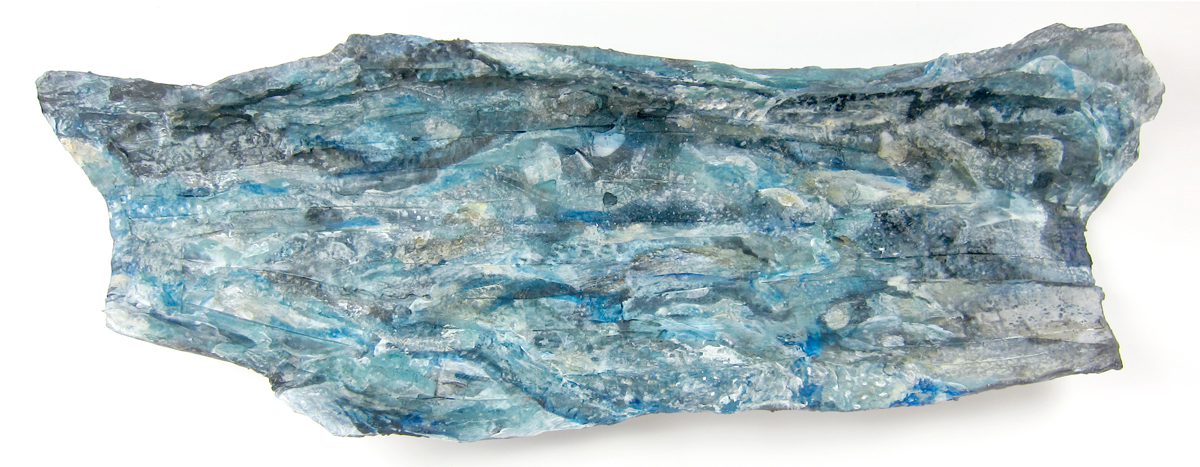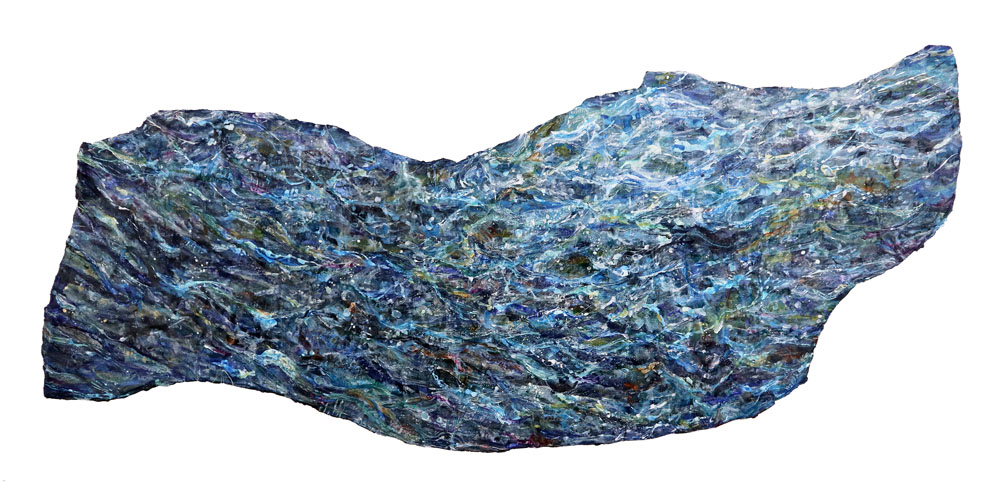Art Practice - Process
The whole artistic process from the materials we use in the production through to delivery and presentation has a carbon footprint. Actions artists can take - challenges and opportunities to make the journery more eco-friendly.
IN THE STUDIO

Materials , Medium and Tools See following section
Ventilation : I prefer to work in a studio with fans and open windows. This helps with air flow as oil paints and solvents can smell and release chemicals as they evaporate. So not good to breathe in for your health. There is a low odour option (biodegradable, low toxicity) but still keep turpentine well covered and only use when necessary.
Lights : It would be nice to have totally natural light during the day as we have a lot of sun. However, most rooms require some ligthing so turn off the lights when out for awhile.
Clean up : Try and use old newspaper to wipe off excess oil paints to dispose and not wash down any drains. Also recycle paper instead of paper towels if possible. Larger quantities of paint may need special hazardous waste disposal (See NEA)
Obstacles - Challenges due to time and existing materials or more costly or no good alternatives available.
Work and source things locally where possible.
Travel and site based projects can have a carbon footprint. Find ways to reduce and offset these.
CONTENT
Making stuff with a purpose -
This could be by spreading awareness of Eco Issues
or getting involved with
Community or social based Projects
ART ECO-SYSTEM
Building a more sustainable Art Eco system which supports eco friendly practices and provides easily accessible options to adopt. Also a Circularity use of resources and information. KNOWLEDGE BASE
GCC - Coalition Gallery Climate Coalition
Resources and Pledges with case studies of Gallery Footprints
Shipping and Travel. Transportation across the world for exhibitions art fairs.
Gallery display and storage. Lights aircon consumption temperature controlled environments.
Printed Materials : catalogues and marketing materials - print using soy based inks. FSC certified paper.
On a higher level instututions also Go green CNA : Museums go green
Schools / Education, Studios, Community
Better support is required to make enviro concerns a common practice.
Collectors : Some collectors hesitate on collecting paper works as they may not last.
Recycling / Upcycling
Creative explorations using alternative materials and methods
My effort is to make art on a recycled base or repurposing scrap materials. While there is a concern on the longevity of the material, still the expression captured can still be conserved no matter the material. Nothing lasts forever and can always be maintained or restored if precious enough.
A base made from paper or material that can be more portable and rolled will save on transport and packaging. Perhaps not so easy to damage and can also be patched.
Wastage - Circularity
Some people have excess materials after a big project or extras when trying out a new hobby. Instead of throwing these away there is a Facebook group in Singapore called - ART DONT THROW where you can share or give away arts and craft materials.
Sometimes galleries after a big event or other artists who are clearing up have excess materials or wooden stretchers, frames to pass on. This mostly happens by word of mouth or even on Carousell
Repurposing
Old Clothes for Rags instead of paper towels
Bottles for storage
Plastic containers
Chopsticks
Using Sustainable Art Materials
Some useful books for a breakdown of materials and use
Artist Guide to Eco Friendly Art
By Scott Denholm
The New Oil Painting : Your Essential Guide to Materials and Safe Practices by Kimberly Brooks Has a informative explanation on painting without solvents.
eg.
- Limit your carbon footprint by using thoughtful processes and environmentally conscious art supplies.
- Artist quality “responsibly sourced” art supplies
- Eliminate harmful solvents from your work and replace them with safe, effective substitutes.
Back to top
Materials and Medium
Creating art requires quite a list of materials.
However some paints can contain harmful chemicals not just for the environment but even for humans.
So care needs to be taken when using as well as disposing the remnants. There are ways we can adapt for a lighter footprint.
Paints and the environment on Artsy
The way I use oil paints is fairly thick and textural so I do not often have wastage or add solvents. Disposal is limited as I reuse the cleaning turpentine with alcohol a technique that another artist shared. So I don’t need to throw this out and when it settles can dispose of the solid paint waste responsibly.
Repurpose - Instead of dumping I usually use excess paint on paper to later tear up and use for collages.
Experiments can be reused in mixed media pieces.
Disposal of cleaning up water for acrylic or solvents for oils.
OIL PAINT
Paints can be toxic and need to be disposed of responsibly. Read the labels. Some pigments/colours are safe and some are more hazardous
There are some eco-friendly options but they are not widely available here.
From Daler Rowney. The tubes when cleaned are recyclable. The most environmentally friendly way of cleaning would be to put the washings into a sand bin. This prevents any washings from going to the sewer.
Oil paint is basically pigment and oil, and most pigments are perfectly safe. Read more >
Water Based paint Acrylics

Washing dried acrylics down the water drain is hazardous as it also contains microplastics which are an increasing pollutant in our eco system. I have tried sifting this and seen ways to absorb this with sand. So try to wipe off access residue on paper and throw it away properly instead. Read more on Sustain The Art
Store unused excess paint in glass bottles for later use.
Varnish and Sprays
These can be quite hazardous and should be used in well-ventilated areas and aerosals disposed of properly. Use more natural painted varnishes with low volatile organic compounds (VOC).
Tools
Paint brushes, palette knives, easels and palettes.
Invest in good tools and Take care of them - cleaning and storing - so they are generally used for awhile and not frequently disposed.
Framing
Wood for stretcher frames - Some framers do have an option for sustainable FSC sources. However it comes at a premium compared to locally sourced wood and may also have an import/travel carbon footprint.
Supplies
An art shop for creatives is like a candy store for kids. Its so tempting to buy new supplies and try out new mediums. Buy only what you need!
Canvas has a cloth base;
Cotton actually has a heavy production foot print while Linen has a less intensive production process and lasts longer however is more expensive.
Paper for sketching and drawing - purchase FSC paper (Forest Stewardship Council®)
Sourcing Eco friendly alternatives
Choose responsibly sourced materials.
However its not that easy to find the original source of materials for local materials as I've asked but unable to get clear answers from the art shop unless its a big brand which has some information on their company site. Sometimes we just have to use a limited supply

Packaging, Delivery and Storage
Storing and transporting, packaging is quite a big issue as protective materials are plastic based -
bubble wrap, sticky tape. Not sure on a solution for this or if there are biodegradable options just for transport and longer lasting materials for storage. I try and keep bubble wrap clean and reuse if for just for 1 work by labelling.
Try using paper based tape or reusable string instead for smaller works.
Back to top















